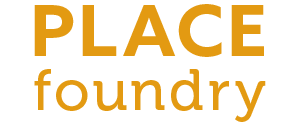Creating places on purpose - part 2
There’s an uptick (again) in declining populations in many cities.
A recent opinion piece by Conor Sen on place affordability might leave you thinking housing affordability will only worsen because of declining population growth.
At the core of Conor Sen’s argument is that stagnating and declining places will continue to experience more people leaving than moving in. He articulates that places like Dallas, Austin, Raleigh-Durham, and Boise will have increasing struggles to keep pace with demand.
There’s truth in what Conor Sen says as one of Place Foundry community members lives and works in one of those metro areas experiencing that same challenge.
But what if the focus on population growth is the wrong metric for non-superstar cities?
Transformative place development is changing course from a metric-driven approach to an ecosystem approach with metrics. It is an intentional design that cares about building magnetic places that retain who you have and attract others.
It is a process of knowing, embracing, and aligning around your people, land, and marketing offerings that future businesses and residents will walk to live, invest, or visit.
The most critical question takes you on a journey of figuring out how to repurpose or build on a piece of property or multiple properties that could be a game-changer for whether someone or some organization chooses to remain or migrate.
Defining the value proposition or the promise that you will deliver to everyone whom you asked the question, “how likely are you to recommend this (property, neighborhood, commercial district, or city region) to a friend, colleague, or family member” leads to creating magnetic places.
Face the fast-growing, stagnating, or declining pace of growth head-on. The promise you made or are about to drive through a place mapping process will guide you toward the solutions that solve place affordability whether you are or are not a part of the superstar cities or shrinking places.
